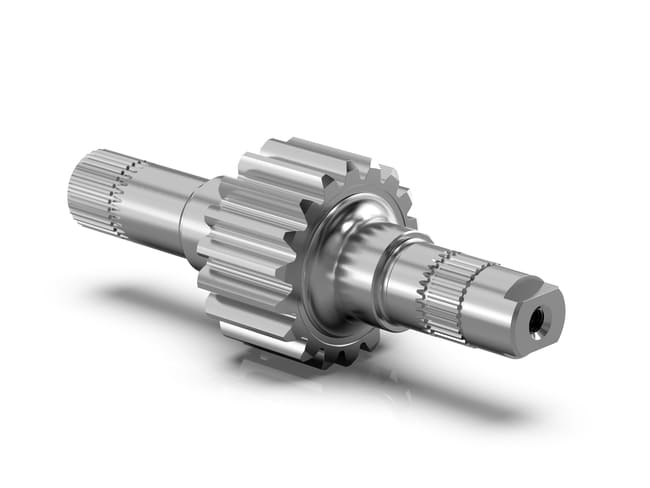
They shouldn't be missing in almost any machine: the evenly toothed wheels are true all-rounders. Whether they are intended to transmit, deflect or amplify a force, their areas of application are as varied as their different forms. And that's exactly what it should be about. Do you know all of the following gear types?
Main types

If two or more gears are connected to each other, this is called a gear drive. In addition, if the respective shafts on which the gears are mounted are parallel to each other, it is a spur gear. Spur or cylindrical gears are probably the most well-known representatives of their kind. They are characterized by regular, external teeth and a round shape.
However, internal gearing is also possible – one sometimes speaks of a ring gear. The advantage of internal gearing is that it reduces the distance to the axis of the externally toothed spur gear.
Due to their round shape, two paired spur gears only allow the transmission of a rotary movement. Racks, on the other hand, are designed to convert this rotation into linear motion. Basically, you can imagine a rack as a developed spur gear: the teeth are at the same, regular distance from each other.
If you want to change the angle of the direction of rotation, bevel gears come into play again. Because of their flat shape, they are sometimes called ring gears and are used to change the direction of a movement. Most often, the two paired wheels are at a 90-degree angle to each other.
The last important type to mention is the so-called worm wheel. To be more precise, one almost always speaks of a worm gear, which consists of a worm wheel and the so-called worm. The worm is essentially a spur gear, one tooth of which winds around its own axis like the thread of a screw. It is attached to a shaft and thus meshed with the worm wheel. This is also a spur gear, but the teeth are arranged at an angle.
Of course there are many other subtypes and gears – but you now know the most important and most used types.
